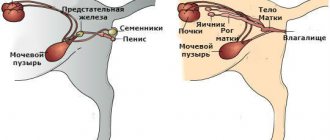The main danger of ticks is the transmission of deadly infections. Most diseases in dogs and cats are the same, but piroplasmosis, or babesiosis, is an exception. In unvaccinated dogs, infection most often turns fatal, and there is practically no data on this topic for representatives of the cat family. Despite this, veterinarians still recommend vigilance, since in 2005 the theory that cats were immune to babesiosis was finally refuted.
What is piroplasmosis
Let's immediately decide on one nuance. Despite the prevailing opinion among some experts that piroplasmosis does not occur in cats, most of the veterinary community adheres to the exact opposite. This disease occurs in cats, and is not so rare . In the meantime, we need to decide what kind of disease this is.
Piroplasmosis is a blood-parasitic disease, which is contracted through the bites of blood-sucking parasitic ixodid ticks. Since cats walk through forests and fields less often than dogs, they “catch” these parasites much less often. Perhaps this is precisely why the opinion about the rarity or even the impossibility of piroplasmosis in these animals is connected.
Causes of the disease
Cats of all ages and breeds suffer from piroplasmosis. But more often the disease affects young animals under 3 years of age. The disease occurs in the warm season, usually in late spring and summer. Before entering the body of a healthy cat, piroplasma or babesia live in an intermediate host - the ixodid tick. Having bitten a sick animal, the blood-sucking insect becomes infected with parasites that are harmless to it. They settle in the tick's intestinal lining and form small spores.
The carrier of piroplasmosis in central Russia is the meadow or dog tick
When a tick bites through the skin and sucks blood, the babesias are regurgitated from the insect's digestive tract and enter the saliva. It contains painkillers and anticoagulants that prevent blood clotting. From the mouth of the tick, young piroplasms enter the vascular system of the domestic cat. The more parasites penetrate the bloodstream, the more rapidly the disease develops.
Babesia is transmitted only hematogenously, that is, through the blood. The main route of infection is a tick bite. Less commonly, invasion by microparasites occurs during animal fights, sexual contact or blood transfusion. Therefore, donor cats are tested for carriage of piroplasmosis.
Do cats get piroplasmosis?
And now it’s time to answer the same interesting question: “Do cats get piroplasmosis?” And we repeat once again - yes, they do get sick, although heated debates on this topic are still ongoing among some experts.
But it should still be noted that doubts about the “plausibility” of feline piroplasmosis did not appear out of nowhere. There are still no plausible studies in this area... But it is reliably known that piroplasmosis occurs very often in wild cats. Most reports of feline piroplasmosis come from fairly warm countries where, in principle, there are no particularly cold winters.
From this we can draw an interesting conclusion: it is quite possible that cats are parasitized by a slightly different type of piroplasm. It is likely that initially it was found only in the south of Europe (by the way, it was there that the causative agent of piroplasmosis was first described), but due to globalization and a general softening of the climate, Babesia begins to migrate. In any case, by default, cat owners are better off assuming that their pets are also susceptible to tick bites.
Prevention
Unfortunately, there is no targeted vaccine against piroplasmosis. There are general vaccinations against diseases carried by ticks, which do not completely protect the animal from parasites, but facilitate the course of the disease itself and protect the pet from death.
Domestic cats that stay indoors and do not go outside are protected from babesiosis. It is not transmitted by dirt on shoes or by airborne droplets.
For other pets, the following protective measures are relevant:
- anti-tick vaccination;
- flea and tick collars;
- sprays against blood-sucking insects.
Let's summarize:
| Dogs | Wild cats | Domestic cats | |
| Pathogen | Piroplasma canis | Piroplasma felis | Not studied |
| The most common form of the disease | acute | latent | latent |
| Mortality rate | 70-80% | 15-20% | rarely |
| Presence of immunity | No | There is | partially |
| Vaccination | general anti-mite | — | general anti-mite |
A cat bitten by a tick should be closely monitored, and if there are suspicious signs, immediately show it to a veterinarian.
Symptoms and first signs of piroplasmosis
Any breeder needs to know the symptoms and first signs of feline piroplasmosis (however, they are not much different from the canine variety):
- The animal becomes unusually lethargic, refuses active games and tries to spend as much time as possible lying down in some dark corner.
- Accordingly, the cat’s appetite sharply worsens or completely disappears. Some pets completely refuse to eat from the very first days of illness, which leads to catastrophically sharp weight loss.
- In many cases, shortness of breath develops and the cat's breathing becomes fast and shallow.
- Fever is characterized by a constant or intermittent type, when the body temperature can rise to 41° Celsius (or higher).
- Even in the case of a sluggish course of the disease, the development of progressive exhaustion is characteristic. In this case, the cat may become like a “bag of bones.”
Since piroplasma affects red blood cells (erythrocytes), resulting in the destruction of the latter, hemoglobinuria may develop (in other words, blood appears in the urine).
For cases of chronic piroplasmosis, jaundice is more typical. Jaundice (icterus) primarily manifests itself on all visible mucous membranes; in severe and advanced cases, even the skin may turn yellow.
At the same time, the pet's fur becomes hard and rough. But still, the most serious consequence of the rapid proliferation of piroplasms in the blood is the destruction of an increasing number of red blood cells. In chronic cases, it even comes to the appearance of their nuclear forms: the body, trying to cope with the lack of red blood cells, begins to release their immature, “premature” forms into the general bloodstream.
Prognosis for recovery
It is important to note that most infected wild cats do not suffer from symptoms of babesiosis. This is associated with the characteristics of the immune system, which can prevent parasites from entering healthy red blood cells. Unlike their immediate ancestors, domestic cats usually die without medical attention.
The prognosis for recovery depends on the form of the disease, the age of the animal and the strength of its immunity. Young and healthy animals recover faster.
A less optimistic prognosis is given for late presentation, when the patient develops the following complications:
- renal, liver and heart failure;
- hypoxia;
- inflammation of the spleen;
- exocrine pancreatic insufficiency;
- pancreatitis;
- lifelong anemia;
- toxic hepatitis.
When pregnant or lactating females are infected, veterinarians recommend abortion and interruption of feeding. The mother's pyroplasmas negatively affect her babies, causing them serious abnormalities and death inside the womb.
Diagnostics
Babesiosis is not diagnosed based on clinical signs. The reason lies in the fact that the clinical picture of this disease is quite vague and not very characteristic. The only way to detect the disease in cats is a microscopic examination of the blood.
In this case, an experienced specialist focuses not only on the detection of piroplasms themselves, but also on the characteristic changes in blood cells. In addition, in recent years, PCR has been increasingly used for this purpose (but the technique is not used so often - it is expensive and requires specific equipment).
Establishing diagnosis
A correct and accurate diagnosis can only be made by an experienced veterinarian after conducting a series of laboratory tests. Even with mild symptoms that alert the owners, the animal is treated with:
- general, biochemical and serological blood test;
- microscopic examination of a blood smear;
- urine test for blood.
The doctor needs to know under what conditions the cat walked in the previous days, that is, whether there was contact with a tick, the presence of even small wounds on the animal’s body, contact with other animals. Individuals with a weakened immune system are more susceptible to babesiosis, so it is necessary to inform the veterinarian about the pet's previous diseases.
It is difficult to establish a 100% picture of piroplasmosis due to similar symptoms with other diseases, for example, infectious anemia, which require completely different treatment.
The best results are obtained by microscopic examination of a smear of capillary blood from the auricle for the presence of Babesia.
Treatment of piroplasmosis in cats
Let us immediately note that the treatment of piroplasmosis in cats is a rather lengthy and difficult procedure. The problem is that the drugs used for this are highly aggressive towards the liver and excretory system of the animal.
We would not recommend treating this disease at home. Since the animal requires constant supervision of a veterinary specialist, it is more advisable to use the hospital option.
Help at home
The very first aid at home should be to immediately contact a veterinarian. You still can’t do anything significant on your own.
Diet
The issue of nutrition is also important in treatment. A weakened body will not be able to digest hard foods.
It is important to follow simple recommendations:
- all products must be presented in ground form;
- food temperature should not be lower than room temperature;
- all meat products are contraindicated - you can treat your furry friend only to beef and turkey;
- products that are accompanied by fermentation are prohibited;
- dry food must be pre-soaked.
This is very important to know, because the animal’s kidneys and liver may fail, which will lead to death.
Anti-tick sprays for animals:
The use of this type of drug is justified as an additional method of protection; it has a repellent (deterrent) effect. It washes off quickly when swimming or in wet grass. Sprays are good to use when the effect of other forms of protection has not yet begun (in the first 2-3 days after using drops or tablets) and when entering a high-risk environment (hiking, hunting, picnics, etc.).
Trade names: Frontline, Bolfo, PhytoDoc, Greenfort, Protecto, RolfClub
Anti-tick sprays for dogs
1.General information
Babesiosis (babesiosis) is a parasitic disease from the group of protozoa, that is, diseases caused by protozoa. The subkingdom of these unicellular microorganisms, numbering more than 30 thousand species, is classified as the animal kingdom. Protozoa are closer to them than to viruses and bacteria, differing from the latter in their more complex structure, size (protozoa, on average, are much larger), methods of existence, nutrition, reproduction, movement and distribution.
Babesioses, like their causative agents, have so far been little studied. It is known that this disease affects many species of warm-blooded animals, and in some (eg dogs) it is severe and often ends in death. Animal babesiosis has been known since the end of the 19th century; the causative agent, the family Babesiidae from the protozoan class of sporozoans, is named after the discoverer V. Babesh. Babesiosis in humans was first officially diagnosed in 1957, and since then has been detected everywhere, except in regions with extreme climates (where intermediate hosts and carriers of the parasite do not survive). Two of the more than 100 pathogenic species of the pathogen were thought to be dangerous to humans, but a third was later discovered. Human babesioses are very rare, or rather, very rarely diagnosed; in all likelihood, they are completely insufficiently taken into account by medical statistics. To date, data on approximately one hundred cases of acute babesiosis have been published, the outcome of most of which (taking into account the characteristics of the patient population, see below) was fatal.
A must read! Help with treatment and hospitalization!











